Godox TT350F: HSS and TTL for Fuji cameras
Introduction
The one thing missing on many Fuji photographers’ wish list was a reliable flash system that includes HSS (high-speed sync) and TTL (through the lens metering) functionality. Nissin and Metz finally introduced HSS compatibility in 2017, but at least for Nissin, you’ll have to send your older flashguns in for a firmware upgrade at additional cost. Their most powerful flash is also a60 GN, usable for weddings and events, but hardly a sun stopper. For larger flash systems, other photographers experimented with the Cactus V6 II, with mixed results and no TTL metering until last month.
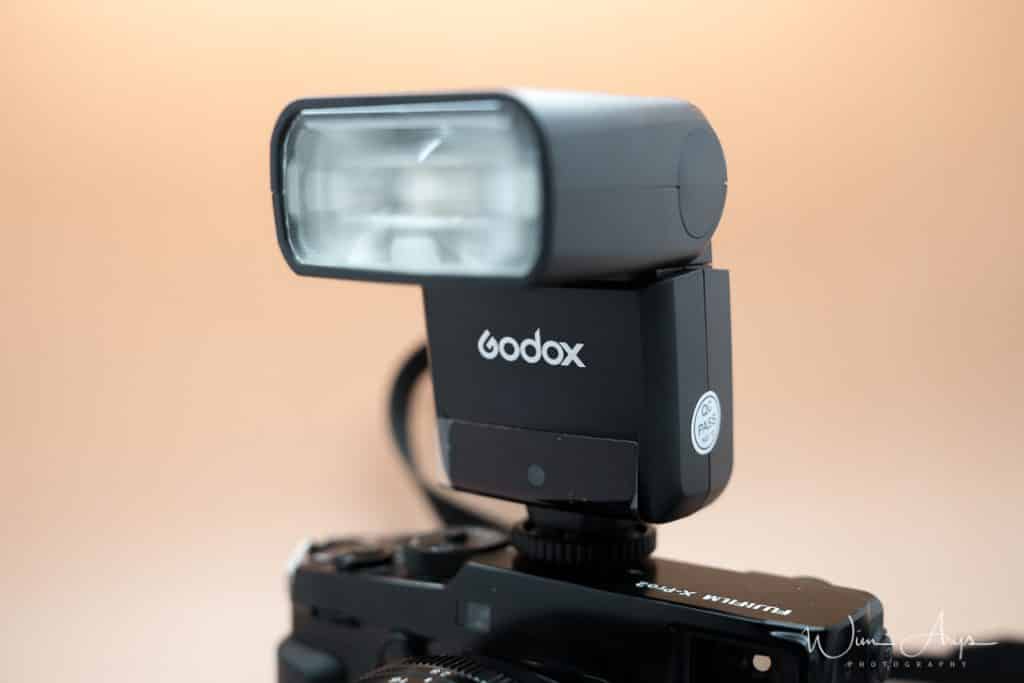
Now Chinese flash manufacturer Godox is throwing their hat in the ring with the arrival of the Godox TT350F pocket flash and X1T-F controller. Both devices can be used as 2.4 GHz controllers for the entire relatively inexpensive Godox range including the popular AD200, AD600 and AD360 II. Godox has many resellers around the world and you’ll find it sold as Flashpoint (by Adorama) in the US, Cheetahstand in the UK and Neewer in many parts of Europe. These are all basically rebranded Godox devices, identical in functionality and yes it’s possible to mix and match all these brands in flash groups with one controller. They even run on the same firmware, I know because I upgraded a Neewer NW860 this week to the last Godox Ving V860IIS firmware this week. A firmware update can be easily done at home by the way, since every Godox product has a USB interface. Scroll down to the firmware update section if you need help upgrading your device.
Since the first trigger available is the Godox TT350F pocket flash, I’ll be having a look at using this little flash as a trigger for the Godox range in this review. Please note I’ve included some “around the house” sample images to illustrate the off-camera TTL capabilities with this flash, I’ll try a “pro” shoot once we see a firmware update. Read on to find out why…
Compatible Fuji cameras
100% compatible, including HSS, TTL and rear curtain sync is the Fuji X-Pro 2, X-T20, X-T2, X-T1(!) and yes the GFX too. You’ll still be able to use the TT350F or Zoom Mini R2 TTL as a flash with the X-Pro1, X-T10, X-E1 and X-A3 with TTL metering but no HSS unfortunately. This is also true if you want to use it as a controller, TTL is available, but no high-speed sync.
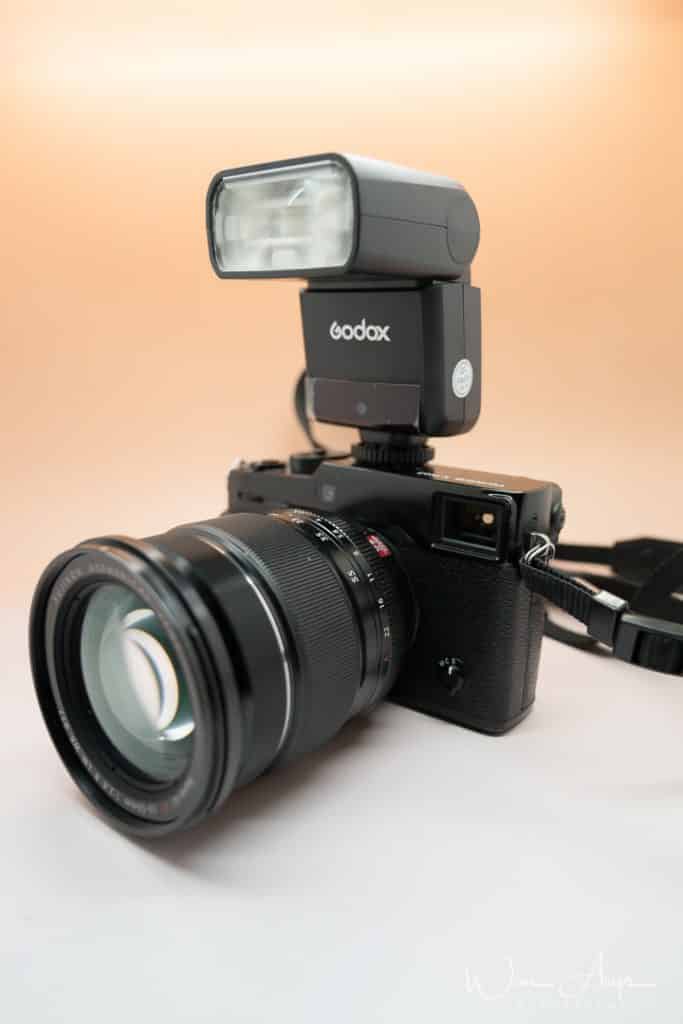
The Fuji X-Pro 2 is fully compatible with the Godox TT350f including TTL, HSS and rear curtain sync as a stand-alone flash, slave or commander.
If you own an X100F or X100T, you can use all the flash functionality (HSS, TTL and rear curtain sync), but as a master unit, HSS is not available.
Setting the FLASHPOINT Zoom Mini R2 TTL (Godox TT350F) up as a Master unit
This Flash can work in TTL/M/Multi flash modes when set as a master unit. Any settings for the slave units on the Master Flash in TTL mode will be automatically sent to the slave units. So the only thing you need to do is to setup the master unit for each slave group and all settings will be transferred to the different groups. You can set up three slave groups for TTL shooting.
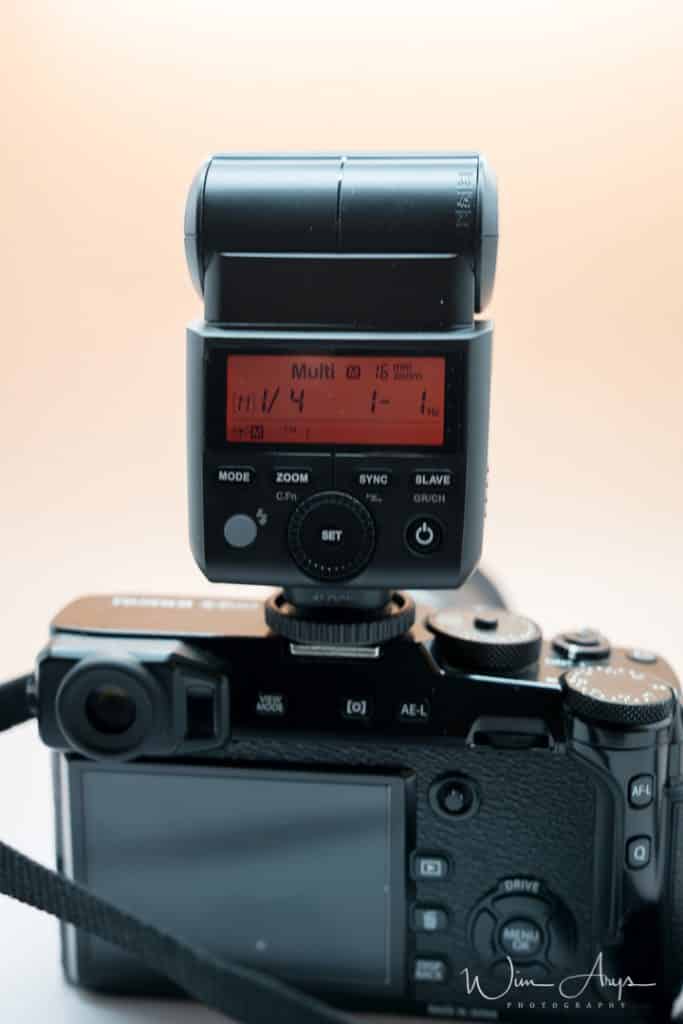
To set the TT350F as master and an off-camera flash as slave unit:
- you’ll need to press the SYNC button for 2 seconds. You’ll notice that the antenna symbol on the lower left of the screen will start blinking. Now turn the select dial until a capital “M” is displayed next to the antenna.
- The “M” stands for master, so now you’ve set your flash as a master controller for other flashes.
- Now press the SLAVE button to choose either A/B/C or M groups and press mode to select TTL or manual mode (or turn this group OFF). Tip: set it to TTL to start with, it’s the easiest way to use the system.
- If you want to go to “Multi mode”, press the MODE button for 2 seconds
- On you slave unit (the off-camera flash) make sure you select the same group and channel.
Tip: Make sure that you are running the latest firmware on both camera and flash!
Godox/Flashpoint firmware upgrade procedure
Windows
If you have a PC running on windows, updating your firmware to the latest version (which includes Fuji support) is a painless procedure. Godox/Flashpoint has a firmware update utility called G1 that you’ll need to download from their homepage and install on your PC. For the newly released AD200, there is a newer firmware updater called G2 that works in the same way.
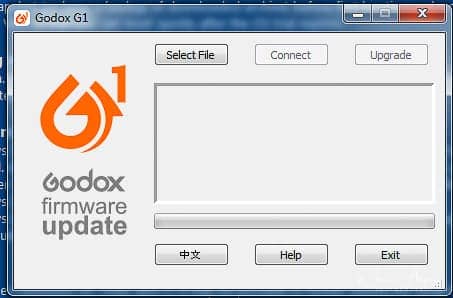
Before connecting your Flash to the computer, remove the battery and press the ON/OFF button as well as the flash preview button to dissipate any residual power on the flash motherboard. You’ll need a good quality USB cable to connect your PC to the flash. If you can’t connect to the flash, try a few other cables, the USB cable is the culprit most of the time.
You’ll need a good quality USB cable to connect your PC to the flash. If you can’t connect to the flash, try a few other cables, the USB cable is the culprit most of the time.
Once connected, it’s simply a matter of loading the firmware update patch inside the G1 (or G2) app and pressing the ‘Connect’ button. You’ll be guided through the update procedure that takes a couple of minutes.
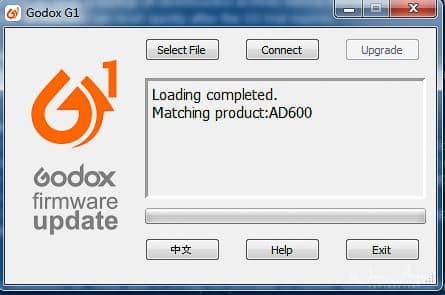
Mac/OS X
If you’re an Apple user, you’ll need a program called Parallels Desktop and a copy of Windows to use the Godox G1/G2 updater. No there is no OSX version available, nor will there be any in the future. I’ve had no problem installing the G1/G2 software on a developers copy of Windows 7. These developers copies are free for a year, so it’s your best bet unless you want to buy a copy of Windows. The other option is tracking down a friend with a PC and doing the update there.
Godox TT350F overview
The Godox TT350F for Fujifilm cameras has a GN of 36. The body looks like it’s all plastic like most flashes out there, but it does feature a metal flash foot. It has a zooming head for even coverage from 24-105mm with automatic zoom or manual control and a stable color at 5600k over the entire power range. It runs on 2 2500 mAh AAA batteries, good for around 210 full power flashes with a recycle time of .1-2.2. seconds. The head can tilt and swivel The LCD is backlit and quite easy to navigate even in the dark. The flash also has a USB port for firmware updates through the Godox G1 Windows firmware update app.

overpowering the sun with Fuji X-Pro2: off-camera flash, HSS with AD200, 1/6400 sec
In terms of functionality, this little flash offers both TTL metering (flash output is metered through the lens for optimal exposure) and High-Speed Sync or HSS (the ability to sync with shutter speeds up to 1/8000 second). It’s fully compatible with All On Camera TTL controls including Exposure Bias, Second curtain sync, EXIF recording and FlashValue Lock. These functions can all be selected in-body though it’s worth noting that once you get into flash groups and Wireless Master/Slave options, you’ll need to adjust this on the flash (or X1T-f when it is released).
That’s right, the Godox TT350F also has a 2.4 GHz sender/receiver so it can be used to control other Godox flashes equipped with the Godox 2.4GHz X Radio System or it can also be used as a slave. The operational range is 30m and you have access to 3 remote groups with 16 channels each for more complex flash setups. If you’re one of those photographers who is wondering why you’d need a flash like this to have the ability to both be a sender and receiver, the answer is simple. Wedding and event photographers like the flexibility of being able to use it as a walk-around flash as well as switching to a controller of off-camera flashes when necessary say the opening dance at a wedding or a speech at an event.
A Guide Number of 36 is of course only really usable as a fill-in flash, and with HSS you get an even lower output, so if you really want to get into what High-Speed Sync can do for you, you’ll mostly be using it as a controller for other Godox flashes.
Godox TT350F user report
I enjoy the dual functionality of a flash like this where you can easily switch it to a controller of external flashes. Since I’m most interested in using off-camera flashes and HSS with Fuji cameras for my work, I’ve mainly been focussed on getting this to work since receiving the flash. I’ve been using the Godox AD600, AD200, and AD360 II for some time now on my Sony cameras and it’s refreshing to now be able to also use them on the Fuji X-PRO2 and X-T2. Setup was relatively easy, although it took some time to make the connection between the camera body and flash as a controller. After going through the Master setup procedure a second time, suddenly it ‘shocked’ into the wireless connection and everything worked.

HSS with AD200, 1/4000 sec Godox TT350F controller
Setup was relatively easy, although it took some time to make the connection between the camera body and flash as a controller. After going through the Master setup procedure a second time, suddenly it ‘shocked’ into the wireless connection and everything worked.
There are some problems though. This is Godox/Flashpoint’s first venture into Fuji territory and everything is not running smoothly yet. If you’ve never tried the Godox 2.4GHz X Radio System with other camera systems, you might be fooled into thinking that the wireless connection is not always that stable. But normally it is rock solid, triggering off-camera flashes every single time.
This is not yet the case with Fuji, it often misses a trigger. And at first, you might think that the flashes have long recycle times, but this is not the case with my Sony system either. So what is going on here? I would guess that we need a new firmware upgrade before the system will be suited for professional use.
Conclusion
Godox/Flashpoint support for Fujifilm cameras opens up a vast and relatively inexpensive range of flashes for the Fuji APS-C system and medium format GFX. The first product available is the Godox TT350f that can be used as a hot shoe flash as well as a controller for off-camera flashguns like the AD200, AD600 and AD360 II. Through the lens metering (TTL) is fully supported as well as rear curtain sync and HSS (high-speed sync) up to 1/8000 second. This opens up a plethora of creative opportunities for Fuji photographers and I’m sure many of you have been waiting for this. There are a few problems with the first firmware release though. Through the lens metering (TTL) is fully supported as well as rear curtain sync and HSS (high-speed sync) up to 1/8000 second. This opens up a plethora of creative opportunities for Fuji photographers and I’m sure many of you have been waiting for this.

HSS with AD200, 1/6400 sec
There are a few problems with the first firmware release though. The connection between the TT350f set as a controller and off-camera flashes isn’t always that reliable, and the flash does not discharge every time. TTL metering is at the moment not always reliable and tends to overexpose images. But I’m sure we’ll see a new firmware update after this summer when the Godox/Flashpoint system will become truly usable for professional flash photography. For now, it’s a cheap investment if you already own some Godox products and want to get a head start in learning how to use it. If you’re not in the latter category, I would wait until that firmware update shows up.




Thanks for the well done review Wim. Would you be able to let me know the percentage of miss firing? I should be receiving my TT350F tomorrow to work with my two AD600BM and will be using them for a shoot very soon so I would really appreciate the information so I know what to expect.
I have the i40 and the thought of needing to send in for firmware update every time with extra cost make me decide not to go with the Nissin i60A & i700 system especially considering the cost of the AD200 is the same as i60A with 3 times more power to spare when it comes to HSS power requirement shooting outdoor (done that with poor result with 5DM3 & 600EX-RT already).
Hi George,
I totally agree with you in regards to the quality and affordability of the Godox range. I have over 50% misfires currently. Try setting it to single shooting and AF-S tomorrow to give the system plenty of time to process. I hope you’ll fare better, please let me know how you get on with your copy.
Great article and thanks. I have been searching around the web for stories about this inexpensive Fuji flash option. I have not been able to determine just how much power this flash has. I do have a nissin i40 which is a nice basic flash and does a good job as a quick set up. But the 350 looks to be a pretty good, not expensive multi flash set up. I would use one or two to shoot through an umbrella or light dome and was wondering if you tried this and whether or not you could estimate based on the flash power how far away one would have to be from a subject to get sufficient light. Thanks.
Hi Elliot, well the Godox TT350F is a GN36, so it’s about as powerful as the Nissin i40. In daylight, you’d need to be pretty close for it to make a difference. You can try to use HSS, and bump the shutter speed way up (1/4000) in order to balance daylight and flash, but I think this flash would be a bit underpowered for your intended use. May I suggest you look at the Godox AD200 (flashpoint evolv 200 in the states) as a second off-camera flash? it’s as powerful as 6-8 TT350F’s and currently on sale for $285 at Adorama, and would fulfill all your needs alongside a TT350F or X-1Tf.
what pc sync cord do I need? One with male/female ends, or regular pc sync cords? The Godox tt600 doesn’t have a port for the regular type connections. Looks like it needs male/female type. Please help? Thank you.
Hi Cathy, this flash does not have a PC sync terminal.
How do you actually check what is the current running firmware on the TT350?
Hi Kirx, Press the Button and the turn the flash on. Then, the firmware update version (e.g. Version 1.0 will read U-1.0) will be displayed on the LCD panel.
Hello,
How do you set the ratios on the Godox TT350F?
I want to have the off-camera slave flash a half to one stop brighter than the on than the on-camera master.
Thanks,
Keith